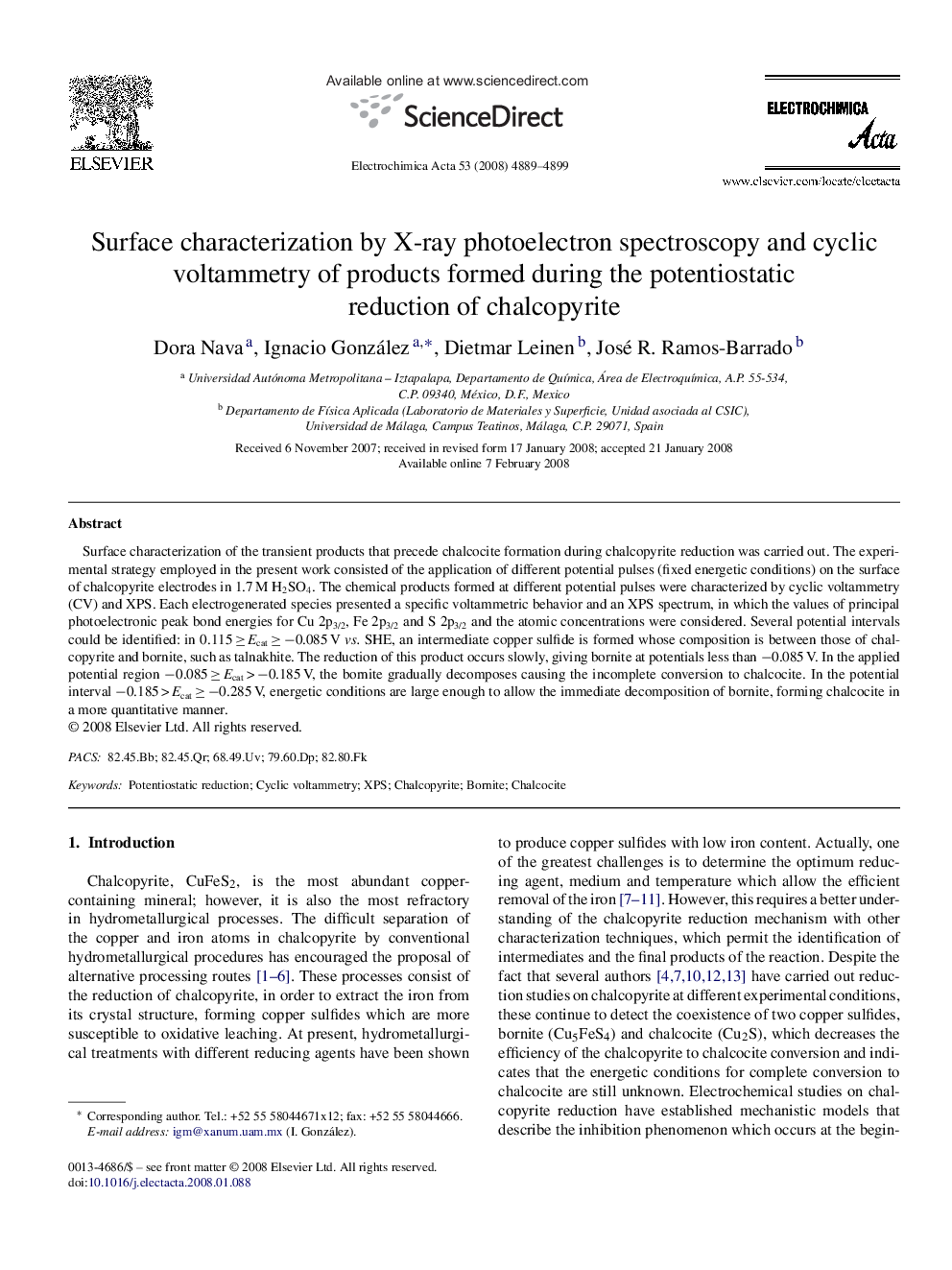| Article ID | Journal | Published Year | Pages | File Type |
|---|---|---|---|---|
| 192875 | Electrochimica Acta | 2008 | 11 Pages |
Surface characterization of the transient products that precede chalcocite formation during chalcopyrite reduction was carried out. The experimental strategy employed in the present work consisted of the application of different potential pulses (fixed energetic conditions) on the surface of chalcopyrite electrodes in 1.7 M H2SO4. The chemical products formed at different potential pulses were characterized by cyclic voltammetry (CV) and XPS. Each electrogenerated species presented a specific voltammetric behavior and an XPS spectrum, in which the values of principal photoelectronic peak bond energies for Cu 2p3/2, Fe 2p3/2 and S 2p3/2 and the atomic concentrations were considered. Several potential intervals could be identified: in 0.115 ≥ Ecat ≥ −0.085 V vs. SHE, an intermediate copper sulfide is formed whose composition is between those of chalcopyrite and bornite, such as talnakhite. The reduction of this product occurs slowly, giving bornite at potentials less than −0.085 V. In the applied potential region −0.085 ≥ Ecat > −0.185 V, the bornite gradually decomposes causing the incomplete conversion to chalcocite. In the potential interval −0.185 > Ecat ≥ −0.285 V, energetic conditions are large enough to allow the immediate decomposition of bornite, forming chalcocite in a more quantitative manner.
